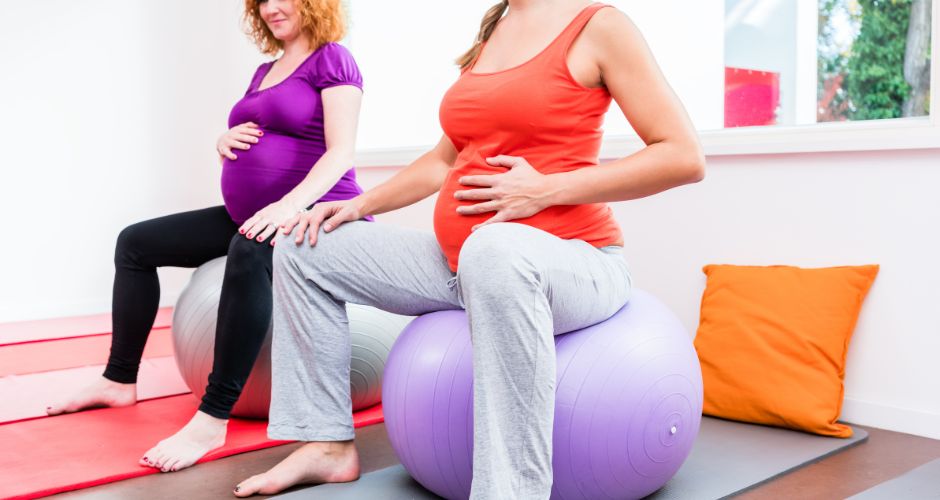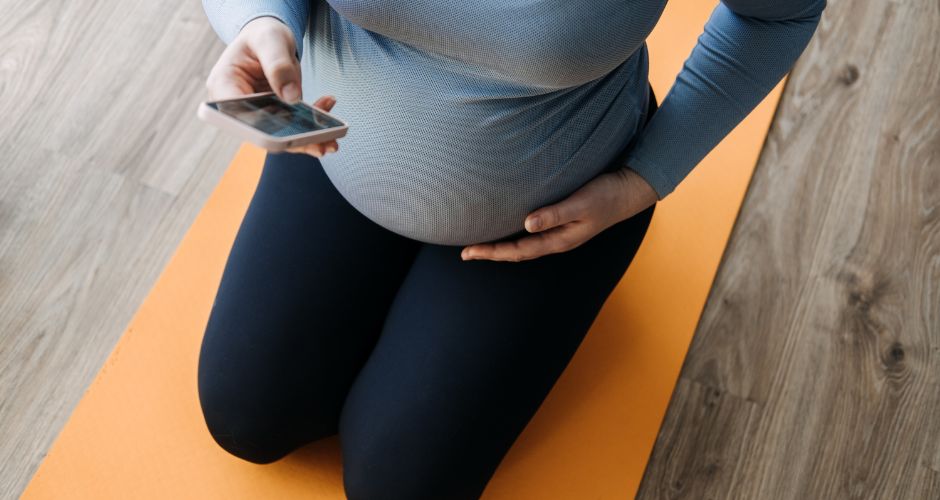Exercise During Pregnancy: A Month-by-Month Guide

Pregnancy is a dynamic journey, and staying active is generally beneficial for the mother’s well-being and the baby’s development.
The experience of becoming pregnant is a wonderland, a journey of profound physical and mental transformation. It is crucial for expectant moms to maintain a healthy lifestyle, and one important way to do this is to include safe and helpful exercise routines for each trimester.
We will be delving deeply into the realm of “Exercise During Pregnancy” in this blog. We’ll walk you through safe exercises, offer professional advice, and explore the many advantages that exercise can offer to you and your developing child from the beginning of the first trimester to the end of the third.
Exercise During Pregnancy: First Trimester (Months 1-3)

During the first trimester of pregnancy, it’s crucial to prioritize gentle and safe exercises to support your changing body. Here are some recommended exercises:
Walking:
- Method: Start with short, brisk walks for about 20-30 minutes.
- Tips: Wear supportive shoes and choose even surfaces for walking.
Prenatal Yoga:
- Method: Engage in prenatal yoga designed for early pregnancy, emphasizing gentle poses.
- Tips: Attend beginner classes and focus on proper breathing techniques.
Swimming:
- Method: Swim laps or participate in water aerobics.
- Tips: Ensure proper hydration and maintain a comfortable water temperature.
Benefits during the First Trimester:
- Morning Sickness Relief: Gentle exercise can alleviate symptoms.
- Energy Boost: Regular activity helps combat early pregnancy fatigue.
- Weight Management: Establish healthy weight practices.
Tips for Exercising in the First Trimester:
- Consultation: Prioritize a consultation with your healthcare provider before starting any new exercise routine.
- Stay Hydrated: Proper hydration is crucial, especially if experiencing morning sickness.
- Listen to Your Body: Pay attention to your body’s signals and adjust exercise intensity accordingly.
- Supportive Gear: Invest in supportive athletic wear, including a comfortable sports bra.
Overall Considerations:
- Intensity: Keep exercises at a moderate level to accommodate changes in energy levels.
- Frequency: Aim for 3-4 days per week.
- Warm-Up and Cool-Down: Always incorporate gentle warm-up and cool-down exercises to promote flexibility and prevent injury.
Exercise During Pregnancy: Second Trimester (Months 4-6)

As you progress into the second trimester, maintaining a safe and active exercise routine is beneficial for both you and your baby. Here are recommended exercises:
Swimming:
- Method: Continue swimming or water aerobics.
- Tips: Focus on maintaining a comfortable water temperature and proper hydration.
Prenatal Yoga:
- Method: Participate in prenatal yoga classes, incorporating poses suitable for the second trimester.
- Tips: Emphasize gentle stretches and poses that avoid putting pressure on the abdomen.
Strength Training:
- Method: Incorporate light strength training using body weight or resistance bands.
- Tips: Focus on toning and maintaining muscle strength without heavy weights.
Benefits during the Second Trimester:
- Improved Circulation: Exercise helps enhance blood flow, reducing the risk of swelling.
- Reduced Back Pain: Strengthening exercises can alleviate back discomfort.
- Enhanced Mood: Regular activity contributes to positive mental well-being.
Tips for Exercising in the Second Trimester:
- Modify Poses: Adapt yoga poses to accommodate your growing belly.
- Hydration: Continue prioritizing proper hydration, especially during water-based exercises.
- Comfortable Attire: Wear comfortable clothing that provides support to your changing body.
Overall Considerations:
- Consultation: Maintain open communication with your healthcare provider and update them on your exercise routine.
- Listen to Your Body: Be attuned to your body’s signals and modify exercises as needed.
- Rest: Allow for adequate rest between sessions, and prioritize sleep for overall well-being.
Exercise During Pregnancy: Third Trimester (Months 7-9)

As you enter the third trimester, adjustments to your exercise routine become essential to accommodate your growing belly and changing body. Here are recommended exercises:
Prenatal Yoga and Stretching:
- Method: Engage in gentle prenatal yoga with a focus on stretching and relaxation.
- Tips: Prioritize poses that ease tension and discomfort.
Walking:
- Method: Continue with moderate-paced walks, but shorten the duration if needed.
- Tips: Listen to your body and choose level surfaces for walking.
Swimming and Water Aerobics:
- Method: Maintain water-based exercises to alleviate pressure on joints.
- Tips: Be mindful of water temperature and hydration.
Benefits during the Third Trimester:
- Pelvic Floor Strengthening: Prenatal exercises contribute to pelvic floor health.
- Reduced Swelling: Water-based activities can help minimize swelling in the extremities.
- Calm and Relaxation: Yoga and stretching promote a sense of calmness and relaxation.
Tips for Exercising in the Third Trimester:
- Modify Intensity: Opt for lower-impact activities to reduce stress on joints.
- Supportive Gear: Wear comfortable and supportive maternity workout attire.
- Hydration: Ensure consistent hydration, especially during water-based exercises.
Overall Considerations:
- Consultation: Continue communication with your healthcare provider, updating them on your exercise routine.
- Listen to Your Body: Pay close attention to any signs of discomfort and modify or stop exercises accordingly.
- Rest: Prioritize ample rest and sleep as your body prepares for childbirth.
- Pelvic Floor Exercises: Incorporate pelvic floor exercises recommended by your healthcare provider for strength and flexibility.
Postpartum Recovery Guide: Nurturing Your Well-Being After Childbirth
Postpartum recovery is a crucial period during which your body heals and adjusts to the changes brought about by childbirth. Prioritizing self-care and adopting healthy habits can contribute to a smoother recovery process. Here’s a comprehensive guide to postpartum recovery:
1. Rest and Sleep:
- Prioritize rest and take naps when your baby sleeps.
- Establish a sleep routine to ensure adequate rest.
2. Nutrition:
- Maintain a balanced diet rich in nutrients for energy and healing.
- Stay hydrated, especially if breastfeeding.
3. Pelvic Floor Exercises:
- Gradually reintroduce pelvic floor exercises.
- Consult with a healthcare provider for personalized guidance.
4. Gentle Exercise:
- Begin with gentle postpartum exercises like walking or yoga.
- Wait for clearance from your healthcare provider before more intense workouts.
5. Emotional Well-Being:
- Allow yourself to experience a range of emotions.
- Communicate openly with your support system.
6. Pelvic Rest and Healing:
- Respect pelvic rest recommendations from your healthcare provider.
- Attend postpartum check-ups for assessment and guidance.
7. Connect with Others:
- Share your experiences with fellow mothers.
- Build a support network to navigate challenges together.
8. Hormonal Changes:
- Acknowledge hormonal shifts and mood changes.
- Seek professional help if experiencing postpartum mood disorders.
9. Caring for Incision Sites:
- Follow guidelines for caring for C-section or perineal incisions.
- Report any signs of infection or complications.
10. Self-Care Rituals:
- Incorporate self-care rituals into your routine.
- Prioritize activities that bring you joy and relaxation.
11. Professional Guidance:
- Consult healthcare providers for any concerns.
- Engage with a postpartum doula or specialist for additional support.
12. Family Bonding:
- Foster family bonding with your newborn.
- Include your partner in caregiving responsibilities.
Remember, each pregnancy is unique, and it’s essential to adapt your exercise routine based on your health and comfort levels. If you experience discomfort, pain, or unusual symptoms, consult your healthcare provider promptly. Staying active during pregnancy can enhance your physical and mental well-being, but safety should always be the top priority.
Recommended : Massage During Pregnancy




